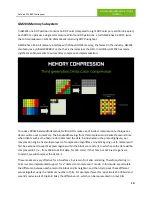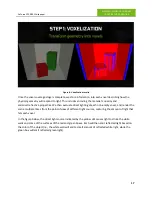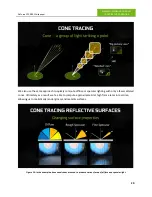
GeForce GTX 980 Whitepaper
INTRODUCTION
5
Dramatic Leap Forward In Lighting with VXGI
Lighting is the biggest hurdle in computer graphics that must be overcome in order to achieve
photorealism. Global illumination gets us significantly closer to achieving this goal. Global illumination is
often used in the movie industry to produce CG scenes that look stunning, but rendering truly dynamic
global illumination in real time on the GPU has been impractical until now.
NVIDIA Voxel Global Illumination (VXGI) is the next big leap forward in lighting. VXGI is based on the
concept pioneered by NVIDIA researcher Cyril Crassin in 2011, of using a 3D data structure (“voxels”) to
capture coverage and lighting information at every point in the scene. This data structure can then be
traced during the final rendering stage to accurately determine the effect of light bouncing around in
the scene.
Cyril’s original implementation relied on voxels that were stored in an octree structure. While it was able
to run successfully on a GeForce GTX 680, it had limitations. We’ve spent the last three years developing
an implementation that can be accelerated natively by the GPU, as well as improving the algorithm. The
result of that effort is VXGI.
VXGI provides dramatically improved performance for global illumination. While VXGI’s software
algorithm will run on all GPUs, the performance benefits of VXGI hardware acceleration will only be
available on our latest Maxwell GPUs.
The first graphics cards to ship with our new GM204 GPU are the GeForce GTX 980 and GeForce GTX
970. For simplicity purposes we’ll be focusing solely on the GeForce GTX 980 in this document. With
2048 CUDA Cores and 4GB of GDDR5 memory, GM204 is the fastest GPU in the world, yet with a TDP of
just 165W, it’s also the most efficient.






































